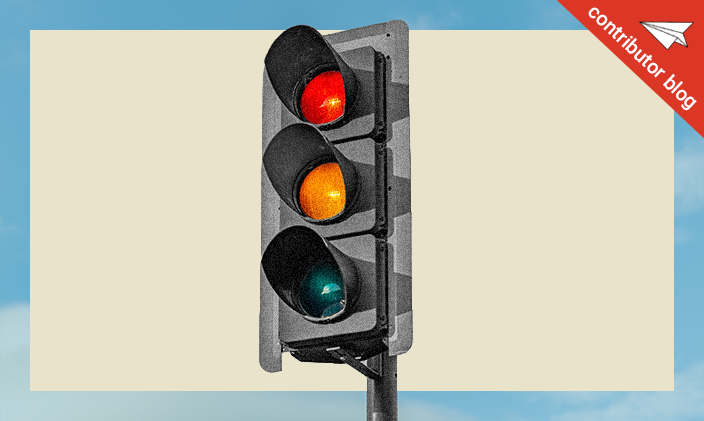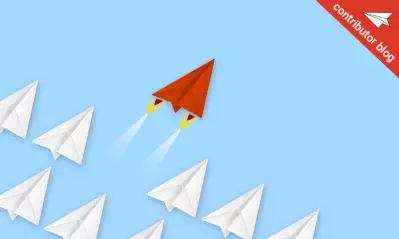5 powerful practices to get more of the right things done

Written by Robert Strohmeyer

If work, school, family and keeping everything on track have become stressful and overwhelming, you’re not alone. According to the World Health Organization, we’re living in an age of elevated anxiety and poor mental health. And that’s not just an empirical observation. Since the pandemic, 25% more people worldwide report recurring feelings of anxiety, stress and depression.
That’s a marked rise from just a decade ago.
There is no quick-fix solution to managing stress and improving poor mental health. Some people point to exercise and meditation. Others might tout medication. And yet others might point to the schedule-enhancing benefits of technology.
Yet, even with all these tools, many are suffering.
If you’re among those who need meaningful change to improve well-being, here are five powerful practices for altering your workplace habits — and finding a little more peace amid workplace stress.
5 powerful practices to help manage workplace stress
1. Establish a reliable inbox
One of the biggest sources of controllable work stress is the persistent feeling you’re letting things slip through the cracks. In his bestselling book Getting Things Done: The Art of Stress-Free Productivity, David Allen identifies the ambiguity of not confidently knowing what needs to be done as one of the greatest sources of workplace stress and anxiety for busy people.
To combat those stressors, he prescribes a reliable inbox. In today’s world, that really means two inboxes: a physical one for the actual paper, mail, notes and other matter-based bits that come into your life and signify stuff that needs doing; and a virtual one for email and to-dos.
Email inboxes make a good option for a digital inbox since that’s where the bulk of our incoming workplace tasks show up in the first place. In addition to naturally incoming email, you can send yourself tasks and things to remember. Simple, single-line task entries fit neatly into subject lines, and you can put additional notes or attachments in the body of the email if needed.
Allen insists that the separation of your workplace and home tasks should not matter when it comes to inboxes. If picking up milk on the way home needs to happen, it’s just as worthy of a place in your inbox as a reminder to file that report to your boss.
Once you’ve established your digital and physical inboxes, use them faithfully. Every time you receive a task input, such as a text message with a request in it, get it into your digital inbox.
2. Prioritize ruthlessly
An old saying goes, “If everything is a priority, then nothing is.” In all probability, you have more potential workplace tasks that you could do than you actually can do. Unnecessary tasks can quickly become unnecessary stressors.
A simple classification system known as the Eisenhower Matrix makes prioritization easy. For any given task, decide if it’s important and if it’s urgent. This may seem obvious, but how many times have you fallen behind on important projects because you spent your time on more urgent — but less important — things? Urgent, unimportant things may be time sensitive, but they may not be worth your time.
Do the urgent and important things first, and be willing to let the unimportant things slide completely. This can help make your day-to-day less stressful and contribute to your overall workplace well-being.
3. Sort workplace tasks to “do, delegate or defer”
Review your inbox daily and, for each item, quickly decide whether you will do it right at that moment, delegate it to someone else or defer it to another time. This approach, also prescribed by David Allen of Getting Things Done, helps to quickly empty your inbox while clearing the simpler things immediately and giving structure to everything else.
If you’re not the right person for the task, delegate it immediately. Fire off an email or phone call and get it into the right hands. Now it’s off your plate and assigned properly.
If you’re the right person for the task, and it can be done in a few minutes (such as “Make an appointment for the team dinner”), then just do it immediately.
If you’re the right person for the task and it can’t be done in a few minutes, decide when you can do it, then either schedule it or set it to reappear in your inbox on the right day.
4. Work in focused bursts and take frequent breaks
To avoid burnout and work optimally, take frequent breaks. There’s no point in grinding at the keyboard for hours on end if your actual attention span barely lasts 10 minutes before your mind wanders.
Research on productivity and attention shows that distraction and task switching can derail our work within as little as 30 minutes unless we take steps to maintain focus. Meanwhile, evidence suggests that taking breaks actually improves productivity and reduces work stress and burnout by letting your mind rest and allowing for more intuitive problem-solving to happen in a relaxed state.
The optimal length of a work session or a break varies by individual and situation. One popular method for applying this insight is the Pomodoro® Technique. Named for the simple tomato-shaped kitchen timer creator Francesco Cirillo used, the method is straightforward: Set a timer for 25 minutes and work with total focus on one task. When the timer goes off, take a five-minute break before starting another task.
I’ve used this method for almost 20 years and find it helps me maintain focus and mental energy throughout the day. The timer handles time management, so I don’t have to think about anything but the task at hand until it rings.
You can download any number of timers, or use one on your watch or phone, and experiment with different times. If you find your mind wanders after just 10 minutes, then set the timer for 15 and gradually work to improve your attention span over weeks or months. If you have an hour with three 15-minute sessions of focused effort (and five-minute breaks in between), that’s much more productive than a solid hour of staring at the screen and getting less than 15 minutes of real work done.
5. Get your inbox to zero every day
Originating as a component of Allen’s Getting Things Done (GTD) methodology, the concept of Inbox Zero has caught on in its own right, even for people who’ve never heard of GTD. Because everyone has an inbox, this productivity idea can apply no matter what other techniques you’re using to manage your work and life.
The concept honors its name: End each day with nothing left in your inbox. In email terms, this means you’ve responded appropriately to every email that came in (by doing what was needed, replying, forwarding to the right people or putting tasks on your to-do list or calendar). This lets you start the next workday with a clear head and minimal stress, confident there’s nothing you’ve forgotten about lurking in a long list of messages below the bottom of your screen.
If you’re using a physical inbox as well, the same principle applies. Don’t let it stack up day after day. Clear it out by the end of the day, either doing, delegating or deferring each thing in it.
After all, when you get the right things done every day, you have less waiting for you tomorrow — and that includes less workplace stress.

ABOUT THE AUTHOR
Robert Strohmeyer is a serial entrepreneur and executive with more than 30 years of experience starting and running companies. He has served in leadership roles at three successful software startups over the past decade, and his writing on business and technology has appeared in such publications as Wired, PCWorld, Forbes, Executive Travel, Smart Business, Businessweek and many others. He lives in the San Francisco Bay Area.
This article has been vetted by University of Phoenix's editorial advisory committee.
Read more about our editorial process.
Read more articles like this:


